Keywords: Forms of PTSD.
PTSD Projection is mostly an unconscious process, and it can take considerable time to become fully aware of it. Often, it is so woven into the structure of our character, that we perceive it as being normal.
Projection does lead to the reenactment of emotional patterns. What this means is that the emotional hardships (trauma) that you experienced earlier in life are repeated. The circumstances and the people involved might be different but the emotional content is the same or it’s opposite.
Projection does lead to the reenactment of emotional patterns. What this means is that the emotional hardships (trauma) that you experienced earlier in life are repeated.
Unconscious Patterning and 5 Forms of PTSD Projection and Reenactment
To make it transparent how projection and reenactment flow together, I will outline some examples and elaborate on them. These are meant to give you an idea of how projection and reenactment are commonplace.
- Jerry suffered severe neglect due to the emotional absence of both parents during most of his childhood. Both the hurt of not being loved as well as his righteously indignant anger, due to the absence of his parents, are too much to bear. Jerry’s most dominant symptoms in response are anxiety and depression. Besides being anxious and depressed, Jerry projects his uncontained anger through continuous self-hatred and self-reproach. Furthermore, this manifests as never feeling good enough – although well accomplished – and a severely adverse feeling about his body-image. The projection of anger through self-reproach and self-hatred reinforces his initial pain of rejection, and not feeling loved and validated. His prior outward circumstances though have now become internalized.
- Jim grew up with a father who wouldn’t abide by any words of resistance. His father was highly demanding, incessantly making comparisons and belittling remarks. Jim, to survive and get his father’s approval, did his best to please his him by anticipating his projected needs and wishes, and trying to excel at school. His core hurt also rests on a lack of validation, love, and acceptance. He seeks to bridge these by giving too much of himself to any situation, therefore, lacking in boundaries and integrity. Jim gets married to someone who is equally overbearing, just like his father; controlling and narcissistic, towards whom he projects his need for validation through pleasing her. He attracts and reenacts the same dynamics that were present in his youth. His reenactment, ultimately, leads to a mental breakdown, medication, and PTSD depression.
- James grew up with a mother who was short-tempered and would often shout at him and his sister. As a kid, he would often yell and fight back. James would project his anger, at the same time, onto his sister and get argumentative and abusive towards her. Married and with two kids of his own, he swore inwardly, that he would never be like his mother towards his kids. As a result, he allowed too much space (projection towards an opposite). Due to the absence of healthy boundaries, his kids get involved, as teens, with recreational drugs and hanging out in “bad” company. In this scenario, the projection seems more complicated, or more natural to miss, because it involves a projection towards a compensating opposite for what he experienced. It also leads to internal conflict and frustration for James. Thereby, he continues the reenactment of his unresolved anger from his childhood days.
- John has a mother who was and still is overly attached to him out of her insecurity and lack of love. She gives him very little space, always wanting to know where he is, and not allowing him space to form relationships. These smothering attachment patterns with her doesn’t let him the space to grow into an entirely independent adult. As a consequence, making him feel afraid of women and sexuality resulting in delaying of intimate experience and eventually, leaving home. When he finally does meet his first girlfriend, he marries her, projecting and repeating a similar attachment bond that he had with his mother. His wife has a similar attachment need, and so they form a symbiotic relationship, as opposed to an interdependent relationship. They tend to be anxious, lonely and feel empty and lost without each other’s company.
- Jenny suffered severe physical and psychological abuse from both parents and sexual abuse by her father. She suffers from a lot of repressed anger that, as an adult, which she acts out as being severely judgemental and critical of everything and everyone, along with a strong sense of self-righteousness, fault finding and demanding justice. She separates herself from others, although when she does interact for a period, her inner conflict, through her outward projections and reenactments of anger, quickly escalates.
Forms of PTSD and The Complexity of Reenactment
These are 5 examples of the various forms of PTSD reenactment. They show how difficult and complex reenactment and projection can become and how widely spread they are in our present society. It gives some idea of how projection and reenactment further trauma through the generations and becomes hard-wired in our collective psyche.
[thrive_leads id=’12447′]Please keep in mind that the examples put forward are meant to shine a light on some of those patterns. They are not limited to only these five mentioned here.
Which of these five forms of PTSD projection and reenactment did you resonate most with? Leave your comment below.

